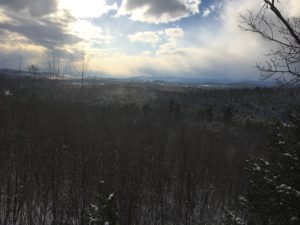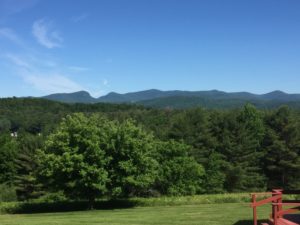As a young boy, I found myself at a hunting camp, nestled among the Adirondacks to the west and the Taconics on the east. Unlike a deer camp, this camp was made for teaching the hunt, and not for performing one. I made my way back to that very same camp every year since, and did the majority of my growing and learning there every summer. If one is to wake too early, with the geese, a golden glow can be visible careening down the eastern facing sides of all too rounded mountains to collide in turmoil at the base of a hill with the night’s blanket of cool fog. This process is slow, but if you blink you’ll miss the sharp pinks thrown skyward by such an explosion. In the afternoon, come time to sit down for dinner, these same rambunctious rays can be seen yanked back over the hills to the west as their fire orange arms reach out to grasp anything on the ground to help them stay in a spectacular struggle of mountain and sky. The hills of the camp itself cascade with the fluorescent greens of plants eager for the sun’s brutal warmth in a brawl for control of the fields and the forests. Underneath these arms of the mighty pine, maple, oak, and birch common on the hillsides crawl the residents of this hillside that are the reason we gather every summer at such a place. the deer scamper through the forests, the turkeys strut through the fields, the ducks glide silently through the lake, and the rabbits bound around the entirety of the place as if a dog were hot on their trail. And if one were to stay up too late, they would be accompanied by the coyotes that prowl the hillside and bask underneath the glorious moon and all of her sisters that float among the blackness of the sky.
Although I did not visit this place in July as I normally would, the November landscape was quite gorgeous still and evoked memories of the phenology site found on the waters of Lake Champlain. Both sites can be found near water, the camp, up a steep hill but not far, and the other directly on Champlain, although there lie most of the similarities. At camp, there are forests with much more diversity and many more trees making the site in Burlington look comparatively like a barren stretch of rocks, although both contain some maples. Both sites have also been found in the presence of ducks, however, if any other similar wildlife were found at both sites the discovery would not be without surprise. Both sites have reacted to the changes of the seasons in similar ways. Neither lake has frozen over yet and Champlain will most certainly not, however, Bomoseen will eventually. Additionally, the trees have found themselves looking quite similarly baren having lost their leaves, except for the pine found in the woods down the hill from camp. Lastly, they have both been impacted by the snowfall, laying a thick blanket of white down across all surfaces.

View from atop the small mountain that sits beside the camp.

looking out over the lake and into the snow beyond.

view of Taconics in July.
Link to google map of the camp.